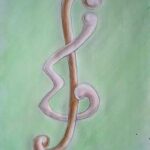
Journal of Combinatorial Mathematics and Combinatorial Computing
ISSN: 0835-3026 (print) 2817-576X (online)
The Journal of Combinatorial Mathematics and Combinatorial Computing (JCMCC) embarked on its publishing journey in April 1987. From 2024 onward, it publishes four volumes per year in March, June, September and December. JCMCC has gained recognition and visibility in the academic community and is indexed in renowned databases such as MathSciNet, Zentralblatt, Engineering Village and Scopus. The scope of the journal includes; Combinatorial Mathematics, Combinatorial Computing, Artificial Intelligence and applications of Artificial Intelligence in various files.
- Research article
- Full Text
- Journal of Combinatorial Mathematics and Combinatorial Computing
- Volume 019
- Pages: 207-208
- Published: 31/10/1995
A PBD construction for six MOLS of order
- Research article
- Full Text
- Journal of Combinatorial Mathematics and Combinatorial Computing
- Volume 019
- Pages: 193-206
- Published: 31/10/1995
Two algorithms to compute monotone stabbers for convex polygons are presented. More precisely, given a set of
- Research article
- Full Text
- Journal of Combinatorial Mathematics and Combinatorial Computing
- Volume 019
- Pages: 171-191
- Published: 31/10/1995
Several algorithms for geometric constructions on the real projective plane are described. These methods also apply to Euclidean plane geometry. The concept of an augmented determining set is fundamental to the algorithms. A backtracking algorithm to find augmented determining sets is described. Algorithms for animating constructions, and an incidence-forcing algorithm are also presented. These algorithms have been implemented on an
- Research article
- Full Text
- Journal of Combinatorial Mathematics and Combinatorial Computing
- Volume 019
- Pages: 161-170
- Published: 31/10/1995
A tournament design,
- Research article
- Full Text
- Journal of Combinatorial Mathematics and Combinatorial Computing
- Volume 019
- Pages: 151-160
- Published: 31/10/1995
We provide two new upper bounds on the total chromatic number of all hypergraphs and give two conjectures related to both the Total Colouring Conjecture for graphs and the Erdős-Faber-Lovász Conjecture.
- Research article
- Full Text
- Journal of Combinatorial Mathematics and Combinatorial Computing
- Volume 019
- Pages: 129-150
- Published: 31/10/1995
The first serious mathematical study of whist tournament designs was carried out in the 1890s by E.H. Moore. In this survey, I shall outline briefly the subsequent work which culminated in the proof of the existence of whist tournaments of all possible orders by Baker, Wilson, and Hanani in the 1970s, and then describe some more recent work, mainly by N.J. Finizio, Y.S. Liaw, and the author, on the construction of cyclic whist tournaments. In particular, triple whist tournaments will be discussed.
- Research article
- Full Text
- Journal of Combinatorial Mathematics and Combinatorial Computing
- Volume 019
- Pages: 109-128
- Published: 31/10/1995
A graph
- every
- every
- Research article
- Full Text
- Journal of Combinatorial Mathematics and Combinatorial Computing
- Volume 019
- Pages: 97-107
- Published: 31/10/1995
The problem of finding the distance between two graphs is known to be NP-complete. In this paper, we describe a heuristic algorithm that uses simulated annealing to find an upper bound for the distance between two graphs. One of the motivations for developing such an algorithm comes from our interest in finding the diameter of families of non-isomorphic extremal graphs. We tested our algorithm on each family of extremal graphs with up to
- Research article
- Full Text
- Journal of Combinatorial Mathematics and Combinatorial Computing
- Volume 019
- Pages: 93-95
- Published: 31/10/1995
Here we present
- Research article
- Full Text
- Journal of Combinatorial Mathematics and Combinatorial Computing
- Volume 019
- Pages: 65-92
- Published: 31/10/1995
There are many graphs with the property that every subgraph of a given simple isomorphism type can be completed to a larger subgraph which is embedded in its ambient parent graph in a nice way. Often, such graphs can be classified up to isomorphism. Here we survey theorems on polar space graphs, graphs with the cotriangle property, copolar graphs, Fischer spaces, and generalized Fischer spaces, as well as graphs with the odd coclique property.





